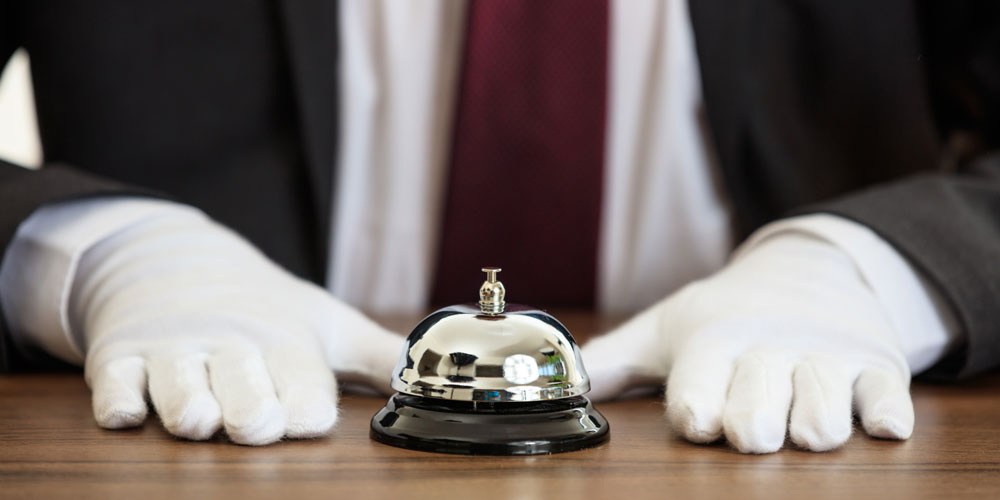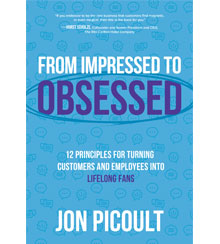Moving from customer-centricity to customer advocacy
Tangible actions that support consumers are the key to growth.
In the late 1990s, when Arkadi Kuhlmann launched what would later become the largest direct US savings bank, ING Direct, he had a surprising message for the nation’s millionaires: we don’t want your money. Though the bank had no minimum deposit rules, it did have a maximum: no million-dollar accounts were allowed.
At the time of its launch, ING Direct was a David among Goliaths, a scrappy upstart in a stodgy, commoditized business that was dominated by a handful of large financial institutions. Given the challenges ING Direct faced in accumulating assets and growing its business, why would Kuhlmann go out of his way to establish policies that barred large deposits from wealthy individuals—many of whom, no doubt, would have found the bank’s high interest rates to be appealing?
The answer lay in Kuhlmann’s desire to create a different type of bank, one that was genuinely focused on the best interests of its customers, one that put customer advocacy at the center of its strategy. Kuhlmann believed Americans needed to be better savers. So he instituted customer-friendly practices that clearly reflected his advocacy not just for the customer, but for the idea of saving. In contrast to other banks, there were no account minimums. There were also no fees or service charges. The bank’s online-only footprint significantly reduced overhead expenses, a savings Kuhlmann returned to consumers in the form of higher interest rates. No 100% loan-to-value mortgages were allowed. And that US$1 million cap on account deposits? It was instituted because Kuhlmann believed that if you had a million dollars to deposit, then you likely needed more sophisticated banking services than ING Direct was designed to offer. So even the bank’s rejection of potentially lucrative business was grounded in a judgment about what was best for the consumer.
Pretty much every business declares itself to be customer-centric and claims to put customers first. Talk is cheap in that regard, though. Businesses that effectively differentiate their customer experience through advocacy do so not through lofty proclamations, but through tangible actions and proof points. When a business does tangibly demonstrate advocacy for its customers, it creates a peak experience that people remember. Kuhlmann trusted that over the long term, his business would be healthier and would grow faster if it turned customers into raving fans.
And that’s exactly what happened. The bank’s Net Promoter Score (a widely used measure of customer-experience quality) was four times as high as the average for financial-services firms. Forty-one percent of the bank’s customers came to ING Direct through positive word of mouth. Deposits grew at a compound annual growth rate of 38% (far exceeding the industry average of 7%), and the bank was consistently profitable after its second year in business.
This is the power of customer advocacy, and there are four key ways to instill that ethic in your business.
Put your money where your mouth is
Fundamentally, being an advocate for your customer means putting their interests ahead of yours. That is, of course, not an absolute precept. If it were, then businesses should just give away their products and services, subordinating their own financial well-being to that of their customers. There is a middle ground, however, where companies earn a reasonable profit without engaging in exploitive behavior (e.g., hotels charging $10 for a minibar bottle of water that costs $2 anywhere else). And then there is a higher ground, where companies advocate for their customers so unequivocally—from both an operational and a financial perspective—that it builds intense long-term loyalty that catapults their business to new heights.
Businesses that effectively differentiate their customer experience through advocacy do so not through lofty proclamations, but through tangible actions and proof points.
Southwest Airlines is an example of a company that has secured that higher ground. From its humble beginnings as a local Texas-based air carrier, Southwest became the largest and arguably most successful US domestic air carrier, earning a profit for 47 consecutive years in a notoriously competitive industry (a streak that ended in 2020 only because of the impact of the COVID-19 pandemic).
Southwest’s story begins much as ING Direct’s did, with advocacy not just for customers, but for an ideal. Whereas Kuhlmann sought to make people better savers, Southwest cofounder Herb Kelleher sought to “democratize the skies.” Kelleher wanted to build an airline that advocated for the average American, one that made air travel accessible to the masses. The entire Southwest operating model was oriented around creating a positive passenger experience, coupled with really competitive airfare.
Perhaps the greatest test of that strategy came during the 2007–09 Great Recession. As fuel prices rose and air carriers struggled to earn a profit, American Airlines began charging a fee for passengers to check a bag. Other major airlines followed suit, raising the ire of many a traveler and forever altering the airline industry’s operating conventions.
Southwest, however, took a different tack. CEO Gary Kelly hewed to the original principles on which Kelleher founded the airline: providing an easy, affordable, and simple air travel experience. Kelly declared that bags would continue to fly free on Southwest. Instead of making a quick buck (actually, billions) by charging for bags, Southwest stuck with what was widely viewed by consumers as a much more passenger-friendly approach. The airline estimates that it’s gained $1 billion a year in market share, in part because flyers wanted to avoid carriers with baggage fees.
That philosophy of passenger advocacy was put on full display again in 2020, when the COVID-19 pandemic disrupted the travel industry. Despite enormous financial pressure to do otherwise, Southwest blocked all middle seats from its flights, voluntarily reducing aircraft capacity to facilitate onboard social distancing.
The common thread through these examples of customer advocacy is that they resulted in short-term financial pain for Southwest. And that’s precisely why these actions resonated so strongly with the flying public. They were tangible demonstrations of how the airline was putting customers first.
Be proactive, strategically
The airline industry and Southwest Airlines also provide the backdrop for this next example of how to operationalize customer advocacy.
In the mid-2000s, after a series of high-profile incidents in which commercial jets were delayed on tarmacs for as much as ten hours due to bad weather, calls grew for the federal government to step in and mandate an airline passenger “Bill of Rights.” Proponents argued that such a move would protect the flying public from the indignities that were wrought on the passengers of those delayed planes, such as sweltering cabins, smelly lavatories, a lack of food, and an inability to deplane.
One airline, however, came out strongly against the idea of a government-authored Passenger Bill of Rights, and that was Southwest. Given what we know about Southwest’s customer advocacy, that might be surprising. But Southwest’s leaders explained that they were already really good at looking out for their customers’ interests. As Southwest President Colleen Barrett said to NPR at the time, if other airlines weren’t as adept at managing their operations and delivering good service, then they should pay the price—not in federal penalties, but in a loss of business.
In contrast to other airlines, Southwest approached flight dispatch as both an operations and customer-service exercise. Southwest staffed its operations center with representatives from nearly every area that might possibly be involved in getting an aircraft from Point A to Point B safely and on schedule. By putting all of those experts under one roof, the company intended to preempt problems as much as possible and mitigate the passenger impact of those problems that could not be avoided.
Indeed, perhaps the highest form of advocacy is that which is initiated on the customer’s behalf by the business, by its own volition, and not in response to a specific customer request, a government mandate, or threatened legislation. At a philosophical level, Southwest always understood that and proactively managed its business accordingly. The company viewed government involvement as a sign of failure.
Don’t wait for customers and other stakeholders to pressure you into doing what’s right. Make that choice on your own and bake it into your strategy, because customer advocacy that must be externally mandated is not advocacy at all.
Be proactive, tactically
Advocacy matters most for customers when they’re on the receiving end of a proactive gesture. It’s the tactical manifestations of your strategy that make all the difference.
To see what that looks like, let’s consider an example from Costco Wholesale, another customer-experience legend. Costco routinely infuses its customer interactions with advocacy, as my own father discovered one summer day when he received an unexpected letter in the mail.
Two months earlier, he had visited his local Costco to buy ink for his printer. When he got there, he saw they were running a promotion: buy two boxes of ink and get an instant coupon for $20 off. So he bought two boxes, got the discount, and went on his way. Fast-forward a couple of months, when a letter from Costco arrived at my father’s home. Upon opening it, he discovered a cash card along with the following message: “Our records show that you purchased ink on either July 12 or July 13. This ink purchase was subject to our $20 off coupon if you bought two units. We were able to negotiate a better deal, and the coupon has now been increased to $30. We are enclosing a Costco Cash Card for the difference of $10. Thank you for your continued membership.”
Costco could have kept quiet and pocketed the extra $10, and customers would have been none the wiser. Instead, the company reached out to customers and delivered a compelling demonstration of advocacy.
This proactive approach is woven throughout the company’s business practices, as evidenced by another service popular with its members, its “recall alert system.” If you’re a Costco member and a product you bought gets recalled—whether it’s an outdoor grill or a carton of eggs—the company will immediately email you with the news. That’s a welcome service in an era when practically every day it seems there’s a recall related to some foodborne illness or product safety issue.
How many retailers take such special interest in their customers that they contact them directly when that $2 head of romaine lettuce they purchased is recalled? Not many, and that’s among the reasons that Costco has so many raving fans. Proactively engaging customers creates an enormously positive impression that they’ll long remember.
Never point, always escort
Go to any Ritz-Carlton, anywhere in the world, and ask an employee for directions to someplace in the hotel—the nearest bathroom, the spa, the restaurant, the concierge desk, and so on. What you’ll experience next will likely feel very different from the typical “wayfinding” response you’d encounter at other establishments. The Ritz-Carlton staff member won’t just tell you where your desired destination is located; they’ll actually take you there.
This simple act, like many other customer experiences at legendary companies, is choreographed quite deliberately. Every Ritz-Carlton employee is trained to “escort” rather than “point” when approached for directions. Why? Because it’s a demonstration of advocacy.
Imagine you’re searching for artichoke hearts at the grocery store, but you’re unable to find them. You spot a store employee stocking some shelves nearby and approach him with a question: “Hi. Can you tell me where the artichoke hearts are?”
With the point, the employee stands, smiles, looks you in the eye, and proceeds to give you directions: “Yes, the artichoke hearts are located in Aisle Three, over there,” gesturing with his forefinger. Of course, today’s grocery store aisles are often the length of a football field, so it’s entirely possible you might venture into Aisle Three and still be unable to find the artichoke hearts. That means you need to invest more time and effort flagging down another store employee so she can show you where the artichoke hearts are located within Aisle Three. Not a great experience.
Contrast that with the escort, in which the employee stands, smiles, looks you in the eye, and says, “Yes, the artichoke hearts are located in Aisle Three. Come, let me show you.” And then the employee gestures for you to follow, leading you to the exact shelf location in the aisle where the artichoke hearts can be found.
There’s quite a contrast between how those two experiences feel to the customer, and here’s why: when using the escort, the store employee is demonstrating that whatever shelves he was stocking when you approached him weren’t nearly as important as making sure you, the customer, got what you needed promptly and efficiently.
The concept of pointing versus escorting can be applied in most any business context, not just grocery stores and not just wayfinding. An effortless experience is about giving customers the gift of time. Customer advocacy, though, is a bit different—it’s about employees giving customers the gift of their time. It’s about subordinating the company’s priorities to theirs. It’s about taking the time to escort customers to a destination, even when not required to.
Putting it all together
Remember: people generally don’t believe that companies act with customers’ best interests in mind. It’s therefore surprising and memorable to people when they witness a company demonstrating genuine advocacy for the customer. But advocacy concerns actions, not words. It’s about providing tangible proof points throughout the customer experience that clearly signal that advocacy. Be proactive in your strategy and tactics, and prioritize your customers’ needs above your own interests, and you’ll be converting customers into lifelong fans.
Author profile:
- Jon Picoult is the founder of Watermark Consulting and author of From Impressed to Obsessed: 12 Principles for Turning Customers and Employees into Lifelong Fans. A noted authority on customer and employee experience, Picoult is an acclaimed speaker and an advisor to top executives at some of the world’s foremost brands.
- Excerpt from From Impressed to Obsessed: 12 Principles for Turning Customers and Employees into Lifelong Fans, by Jon Picoult, pp. 127–142 (McGraw-Hill, 2021).






